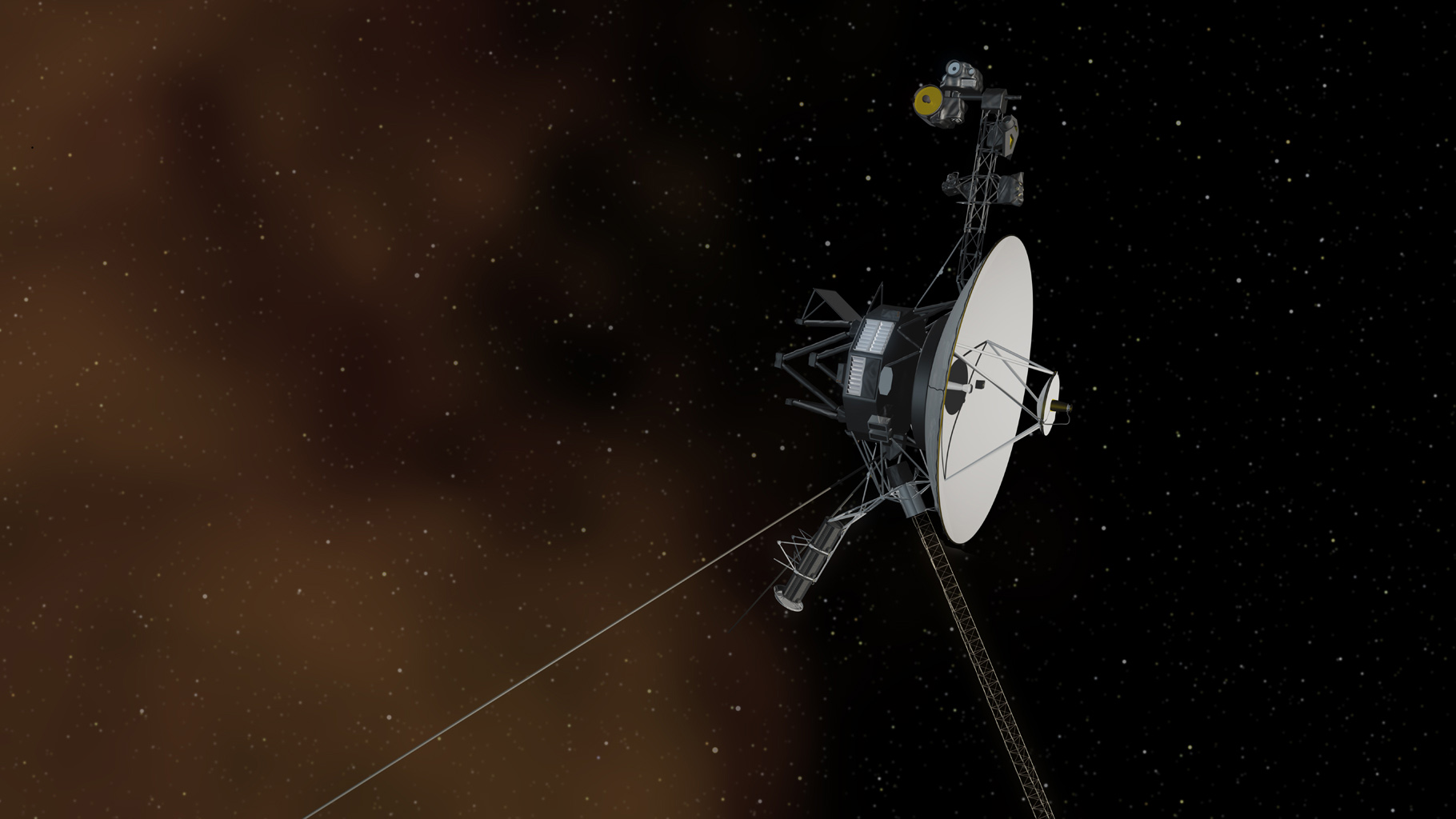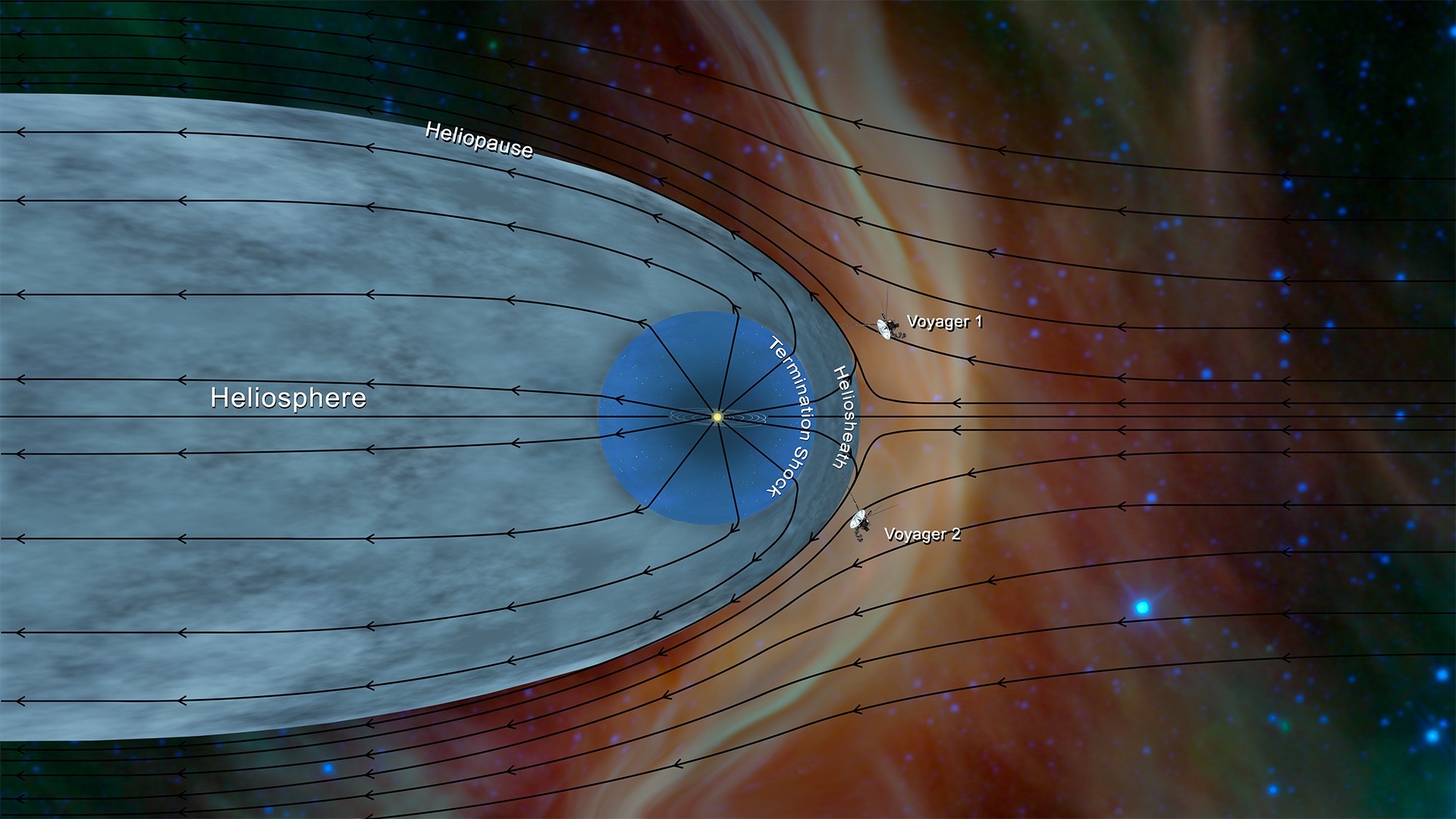NASA's interstellar Voyager 2 probe resumes communication with Earth
The spacecraft is healthy and has reestablished full communications with Earth.

Voyager 2 has reestablished communication with Earth and is operating normally.
NASA's long-running Voyager 2 mission, which launched from Earth in 1977 and is currently about 12.4 billion miles (19.9 billion kilometers) from Earth, lost contact with our planet after a set of commands accidentally moved Voyager 2's antenna two degrees away from Earth on July 28.
A "heartbeat" signal was picked up on Tuesday (Aug. 1) according to NASA's Jet Propulsion Laboratory (JPL), letting mission controllers know the probe was still healthy despite being unable to communicate fully with it. Voyager 2 is programmed to automatically reset its orientation a few times a year in case of troubles like this, but the next window would have been in October.
On Friday (Aug. 4), JPL announced in a mission update that NASA's Deep Space Network facility in Canberra, Australia was able to send a command into interstellar space that reoriented the spacecraft and pointed its antenna back towards Earth. Mission controllers had to wait 37 hours to learn if the command was successful. And it was.
"The spacecraft began returning science and telemetry data, indicating it is operating normally and that it remains on its expected trajectory," JPL said in the statement.
Related: NASA Voyager 2 spacecraft extends its interstellar science mission for 3 more years
"Can you hear me now? Last night, I reestablished full communications with Earth thanks to some quick thinking and a lot of collaboration. I'm operating normally and remain on my expected trajectory," the Voyager Twitter account wrote in a statement posted to the social media platform on Friday (Aug. 4). "So glad I can finally phone home."
Breaking space news, the latest updates on rocket launches, skywatching events and more!
Voyager 2 flew to space from Launch Complex 41 at Cape Canaveral, Florida, on August 20, 1977. After swinging by the four gas giant planets of the solar system between the 1970s and 1990s, it entered interstellar space on Dec. 10, 2018.
Its twin craft Voyager 1 is also operational, flying far away at about 15 billion miles (24 billion km) from Earth. It was the first object to move beyond the gravitational influence of our star, the sun, in 2012.
The missions are slowly losing power from their nuclear radioisotope generators, but engineers have made several alterations to preserve their systems where possible. The heaters have been shut off, for example, and in April 2023 engineers disabled Voyager 2's surge protector (or voltage regulator).
These steps remove a bit of backup for the spacecraft while allowing their power supplies to last longer. The 2023 step alone has postponed one of the instrument shutdowns for Voyager 2 by three years, extending space data collection until at least 2026, officials said at the time.

Elizabeth Howell (she/her), Ph.D., was a staff writer in the spaceflight channel between 2022 and 2024 specializing in Canadian space news. She was contributing writer for Space.com for 10 years from 2012 to 2024. Elizabeth's reporting includes multiple exclusives with the White House, leading world coverage about a lost-and-found space tomato on the International Space Station, witnessing five human spaceflight launches on two continents, flying parabolic, working inside a spacesuit, and participating in a simulated Mars mission. Her latest book, "Why Am I Taller?" (ECW Press, 2022) is co-written with astronaut Dave Williams.

